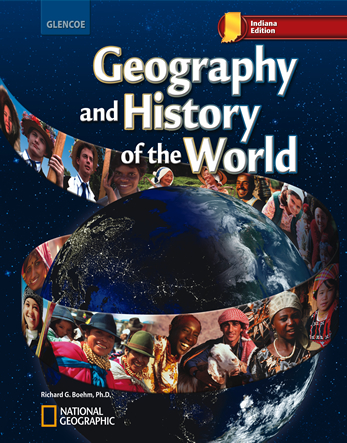

Geography and History of the World © 2010 Indiana EditionChapter 5: Physical Geography of the United States and CanadaChapter OverviewsThe United States and Canada share the northern part of the North American continent. The physical geography, the natural resources, and the climate and vegetation of this large and spacious region are tremendously diverse.The Land Geographic forces helped shape two mountain ranges in the West—the Pacific Range and the Rocky Mountains. Dry basins and plateaus are located between these ranges. The Continental Divide, the high ridge running through the Rocky Mountains, determines the directional flow of rivers. The Central Plains extend some 400 miles across the central part of the region. The Canadian Shield anchors the continent in the northeast, and the Appalachian Mountains, the oldest mountains in North America, run from Quebec to central Alabama. Lakes and rivers provide the United States and Canada with an abundant supply of water for industrial, agricultural, and recreational uses. Glaciers carved out basins north of the central plains of the United States that later became the Great Lakes. The St. Lawrence Seaway links the interior region of the Great Lakes with the Atlantic Ocean. The continent provides a variety of natural resources: oil and natural gas reserves, minerals, and timber. Fisheries are located on both the Pacific and Atlantic coasts. Climate and Vegetation The climatic conditions in Canada and the United States vary tremendously depending on latitude, elevation, ocean currents, rainfall, and location. The climatic conditions in Canada and the United States vary tremendously depending on latitude, elevation, ocean currents, rainfall, and location. The climate of the Southeast is humid subtropical with no dry season. Large islands, such as Hawaii, in the Pacific, and Puerto Rico, in the Caribbean, enjoy tropical wet climates. Climates of the north are divided by location. Interior climates are humid with high temperature variation between seasons and across latitudes. Coastal climates are affected by oceans currents and wind patterns which make this region wet year-round. The high-latitude climates of Northern Canada and Alaska are sub-arctic with low temperatures year-round. Greenland is home to an ice-cap climate with snow and ice. |  |















